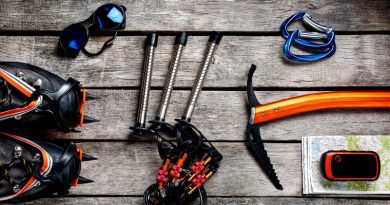
Discover The 10 Best Climbing-specific Conditioning Exercises
Climbing is a multifaceted sport that demands a unique blend of strength, endurance, flexibility, and mental agility. To excel, climbers must engage in conditioning exercises that target the specific muscle groups and movement patterns integral to climbing. This article explores the ten best climbing-specific conditioning exercises, detailing their benefits, execution, and relevance to climbing performance.
The Best Climbing Conditioning Exercises
 1. Pull-Ups
1. Pull-Ups
Pull-ups are fundamental for developing upper body strength, particularly in the back, shoulders, and arms. They mimic the pulling motions essential in climbing, enhancing the ability to ascend and maneuver on the wall and making for excellent climbing conditioning exercises.
Execution:
- Grab a pullup bar with an overhand grip, hands shoulder-width apart.
- Engage your core and pull your body upward until your chin surpasses the bar.
- Lower yourself back to the starting position with control.
Variations:
- Weighted Pull-Ups: Add weight to increase resistance and build maximal strength.
- Archer Pull-Ups: Shift your weight to one side during the pull-up to target each arm individually.
Incorporating pull-ups into your routine enhances pulling power and grip strength, both crucial for tackling challenging routes.
 2. Dead Hangs
2. Dead Hangs
Dead hangs focus on grip endurance and finger strength, vital for maintaining holds during climbs.
Execution:
- Hang from a bar or climbing hold with arms fully extended.
- Maintain a relaxed grip and hold the position for a set duration.
Progressions:
- One-Arm Dead Hangs: Transition to hanging with one arm to increase difficulty.
- Hangboard Training: Use a hangboard to simulate various hold types and improve finger strength.
Regular dead hang practice conditions the forearm muscles and tendons; these climbing conditioning exercises reduce the risk of overuse injuries.
 3. Campus Board Training
3. Campus Board Training
Campus boards are inclined boards with evenly spaced rungs, designed to improve explosive power and finger strength.
Execution:
- Begin with both hands on a lower rung.
- Explosively reach upward to a higher rung, using only your hands.
- Continue ascending without using your feet.
Benefits:
- Enhances dynamic movement capabilities.
- Develops fast-twitch muscle fibers for powerful movements.
Caution is advised, as improper use can lead to injuries. It’s recommended for experienced climbers.
 4. Fingerboard (Hangboard) Training
4. Fingerboard (Hangboard) Training
Fingerboards are climbing conditioning exercise tools with various hold sizes and shapes used to build finger strength and endurance.
Execution:
- Select a hold that matches your training goal.
- Hang with arms slightly bent, engaging your shoulders.
- Hold for a predetermined time, then rest.
Protocols:
- Maximal Hangs: Use added weight for short durations to build maximum strength.
- Repeaters: Perform multiple hangs with brief rests to improve endurance.
Consistent fingerboard training enhances grip strength, crucial for sustaining holds on difficult routes.
 5. Core Exercises
5. Core Exercises
A strong core stabilizes the body, allowing efficient transfer of force between limbs during climbs.
Key Exercises:
- Planks: Hold a prone position, supporting your body on forearms and toes.
- Leg Raises: Lie on your back and lift your legs to engage lower abdominal muscles.
- Russian Twists: Sit with knees bent, lean back slightly, and rotate your torso side to side.
Incorporating these exercises improves balance and body tension, essential for maintaining positions on the wall.
 6. Antagonist Muscle Training
6. Antagonist Muscle Training
Climbing predominantly uses pulling muscles; therefore, training antagonist (pushing) muscles like the chest, triceps, and shoulders is vital for climbing conditioning exercises and muscular balance and injury prevention.
Exercises:
- Push-Ups: Strengthen the chest and triceps.
- Dips: Target the triceps and shoulders.
- Overhead Presses: Develop shoulder strength.
Balancing muscle groups reduces the risk of overuse injuries and enhances overall strength.
 7. Leg Strengthening Exercises
7. Leg Strengthening Exercises
Strong legs provide the foundation for powerful movements and support during climbs.
Exercises:
- Squats: Build strength in the quadriceps, hamstrings, and glutes.
- Lunges: Improve balance and unilateral leg strength.
- Step-Ups: mimic climbing movements, enhancing functional strength.
Incorporating leg exercises ensures climbers can generate force from their lower body, reducing reliance on upper body strength.
8. Flexibility and Mobility Work
Flexibility allows climbers to reach holds that might otherwise be inaccessible, while mobility ensures joints move efficiently.
Focus Areas:
- Hip Flexors: Stretching improves high-stepping ability.
- Shoulders: Enhances reach and reduces injury risk.
- Ankles: Increases stability on small footholds.
Regular stretching and mobility exercises improve range of motion, facilitating more efficient and fluid movements on the wall.
 9. Complex Training
9. Complex Training
Complex training climbing conditioning exercises combine strength exercises with plyometric movements to enhance explosive power.
Example Routine:
- Weighted Pull-Up: Perform a set of heavy pull-ups.
- Rest: Allow 3–12 minutes for recovery.
- Plyometric Pull-Ups or Campus Board Exercise: Immediately follow up with an explosive movement like plyometric pull-ups or dynamic campus board reaches.
This combination develops the ability to generate explosive power, which is essential for making dynamic, powerful movements between holds on a climb. Complex training helps climbers transition from controlled strength to dynamic force.
 10. Endurance Training
10. Endurance Training
Climbing routes, particularly long outdoor routes, demand a high level of endurance. Conditioning your muscles for sustained effort is essential. These are the best climbing-specific conditioning exercises for endurance.
Endurance Exercises:
- ARC Training (Aerobic Restoration and Capillarity): This involves low-intensity, high-volume climbing to build capillary density in forearm muscles, which increases blood flow and delays the onset of pump (muscle fatigue).
- Circuit Training: Create a climbing circuit with several routes or exercises in quick succession, focusing on moderate intensity and minimal rest.
Endurance training enables climbers to sustain energy over extended periods, reducing muscle fatigue and allowing more time to strategize during climbs.
Conclusion
Integrating these ten exercises into your climbing training routine will develop strength, endurance, flexibility, and power—qualities that are crucial to improving climbing performance. From pull-ups to endurance circuits, each exercise is tailored to the physical demands of climbing. However, it’s essential to tailor the intensity and progression to your experience level to avoid injuries. With consistent practice and a balanced approach, these exercises will equip you with the strength and resilience needed to tackle increasingly challenging climbs.







Pingback: Why Adventure Travel Is for Everyone, Not Just Thrill-Seekers - Survivalist School